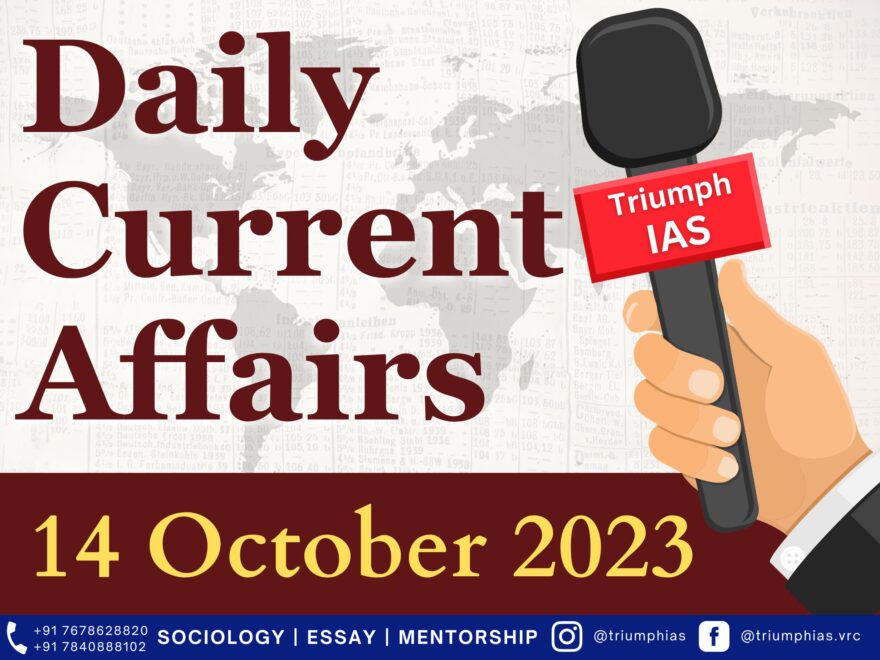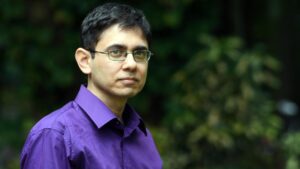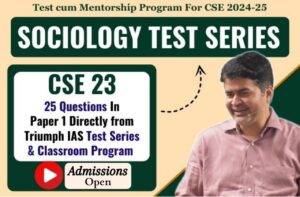Current Affairs 14 October 2023.
Today’s News.
Balancing policy: India must pressure Israel to act responsibly in the face of terror.
Current Affairs 14 October 2023 | Relevant for GS paper-2, International Relation.

- Within hours of the massacre of Israeli citizens by Hamas fighters last Saturday, Prime Minister Narendra Modi tweeted India’s solidarity with Israel.
- While the histories of their conflicts and the scale of violence have been very different, India has faced terror attacks all too often to not feel the pain in Israel where teenagers at a concert, children in a park, grandparents at home, and even babies in cribs were gunned down, amidst other atrocities Hamas carried out, including taking dozens hostage.
- The sentiments were repeated when Mr. Modi spoke to Israel Prime Minister Benjamin Netanyahu, condemning terrorism in all its forms. India’s second big concern has been the safety of its citizens, especially as Israel began retaliatory strikes on Gaza.
- Around 18,000 Indians work or study in Israel, in addition to about 85,000 Israelis of Indian origin (from Maharashtra, Manipur, Mizoram, Kerala, and West Bengal). The Ministry of External Affairs (MEA) has chartered flights to bring them home.
- The statement is a reminder of the tightrope India has walked since 1992, when New Delhi established full diplomatic ties with Israel, while continuing to support the Palestinian cause.
- There has been a shift towards Israel’s position, given increasingly close bilateral relations, trade, technological assistance, military procurement, and counterterrorism cooperation.
- However, a responsible state cannot behave like an insurgent group, and Israel’s latest demand, that more than a million Gaza residents must evacuate as it continues to pound the city and plans a possible ground offensive, will make Delhi’s challenge at balancing policy even more complex.
Refresh basics
India-Israel Relationship
- Though India officially recognized Israel in 1950, both countries established full diplomatic ties only on 29th January 1992.
- As of December 2020, India was among 164 United Nations (UN) member states to have diplomatic ties with Israel.
Economic and Commercial:
- Trade between India and Israel has increased from USD 5 billion before the Covid-19 pandemic to about USD 7.5 billion till 2023 January.
- Trade in diamonds constitutes about 50% of bilateral trade.
- India is Israel’s third-largest trade partner in Asia and seventh largest globally.
- Israeli companies have invested in India in energy, renewable energy, telecom, real estate, water technologies, and are focusing on setting up R&D centers or production units in India.
- India is also in dialogue with Israel for concluding a Free Trade Agreement (FTA).
Defence:
- India is one of the largest importers of weapons from Israel, contributing to about 40% of its annual arms exports.
- The Indian armed forces have inducted a wide array of Israeli weapon systems over the years, which range from Phalcon AWACS (Airborne Warning And Control Systems) and Heron, Searcher-II and Harop drones to Barak anti-missile defence systems and Spyder quick-reaction anti-aircraft missile systems.
- At the 15th Joint Working Group (JWG 2021) meeting on Bilateral Defence Cooperation, countries agreed to form a Task Force to formulate a comprehensive Ten-Year Roadmap to identify new areas of cooperation.
Agriculture:
- In May 2021, “a three-year work program agreement” for development in agriculture cooperation, was signed.
- The programme aims to grow existing Centres of Excellence (CoE), establish new centers, increase CoE’s value chain, bring the Centres of Excellence into the self-sufficient mode, and encourage private sector companies and collaboration.
Science & Technology:
- In recent years, multiple MoUs have been signed between Israel’s Start-Up National Central and Indian entrepreneurship centres like Create and TiE (Technology Business Incubators).
- In 2022, the two countries recently widened the scope of the India-Israel Industrial R&D and Innovation Fund (I4F) to include sectors like renewable energy and ICT (Information and Communication Technology) through increased participation of academia and business entities.
- I4F is a cooperation between the two countries to promote, facilitate and support joint industrial R&D projects between companies from India and Israel to address the challenges in the agreed ‘Focus Sectors’.
Others:
Israel is also joining the India-led International Solar Alliance (ISA), which aligns very well with the objectives of both countries to scale up their cooperation in renewable energy and partner in clean energy.
Govt. mulls partnerships to make semiconductor chips.
Current Affairs 14 October 2023 | Relevant for GS paper-3, Science and Technology.
- Six working groups, which had been formed to mull the Indian government’s artificial intelligence (AI) roadmap, have submitted the first edition of their report, Minister of State for Electronics and Information Technology.
- In addition to this, the PPP model would be leveraged to build so called “GPU clusters”, masses of resource intensive graphics processors that are used by AI applications.
- Mr. Chandrasekhar said use cases for AI that the India AI initiative would look at spanned “agriculture, healthcare, education, fintech, security, and governance”.
Refresh Basics
Semiconductors
- Semiconductors are materials which have a conductivity between conductors and insulators. They can be pure elements, silicon or germanium or compounds, gallium, arsenide or cadmium selenide.
- Significance of Semiconductor Chips: They are the basic building blocks that serve as the heart and brain of all modern electronics and information and communications technology products.
- These chips are now an integral part of contemporary automobiles, household gadgets and essential medical devices such as ECG machines.
The Phonotaxis Phenomenon.
Current Affairs 14 October 2023 | Relevant for Prelims, Science and Technology.

- Recently, it has been discovered that certain creatures like Insects, Bats exhibit positive and negative phenomena of Phonotaxis in response to the existing environmental and anatomical conditions.
- Phonotaxis is the movement by an animal in response to a sound. It has mostly been observed among crickets, moths, frogs, and toads, among a few other creatures.
- The purpose of positive phonotaxis is attraction. It usually happens when the females of a particular species – including those of crickets and frogs – are attracted to the sounds made by the males. Mediterranean house geckos (Hemidactylus turcicus) use positive phonotaxis.
- Negative phonotaxis, on the other hand, serves to repel or warn, such as when the sound of a predator nearby signals to an animal that it needs to move away. Crickets in particular have been found to steer themselves away from low-intensity ultrasound typically associated with bats (which use it for echolocation).
Establishment of an Autonomous Body Mera Yuva Bharat Approved.
Current Affairs 14 October 2023 | Relevant for GS paper-2, Statutory, Regulatory and Various Quasi-Judicial Bodies.
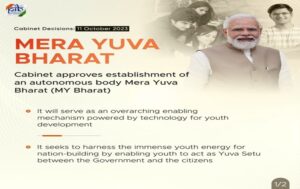
- Recently, the Union Cabinet has approved the establishment of an autonomous body Mera Yuva Bharat (MY Bharat) to serve as an overarching enabling mechanism powered by technology for youth development and youth led development.
- MY Bharat, an autonomous body will benefit the youth in the age-group of 15-29 years, in line with the definition of ‘Youth’ in the National Youth Policy. In case of programme components specifically meant for the adolescents, the beneficiaries will be in the age-group of 10-19 years.
- Under this new arrangement, with access to resources & connection to opportunities, youth would become community change agents and nation builders allowing them to act as the Yuva Setu between the Government and the citizens.
- The Body will improve leadership skills through experiential learning by shifting from isolated physical interaction to programmatic skills and Create a centralized youth database.
About 9 billion kg of e-waste goes unrecognised every year globally: Study.
Current Affairs 14 October 2023 Relevant for GS paper-3, Environment and Related Issues.
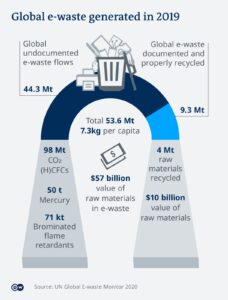
- Consumers fail to recognise almost one-sixth of electronic waste generated globally, amounting to nearly 9 billion kilogram’s per year, a new study has found. These items dubbed as “invisible e-waste” include cables, e-toys, e-cigarettes, e-bikes, power tools, smoke detectors, USB sticks, wearable health devices and smart home gadgets.
- Brussels-based organization Waste Electrical and Electronic Equipment (WEEE) Forum organizes International E-Waste Day on October 14 every year. It commissioned the United Nations Institute for Training and Research (UNITAR) to calculate the annual quantities of “invisible” e-waste items in millions of kgs, in millions of pieces, and in kg and pieces per capita.
- The study findings were published on WEEE website on October 12, 2023, two days ahead of the occasion to focus on “invisible e-waste” this year.
- The term “invisible e-waste” refers to e- waste that goes unnoticed due to its nature or appearance, leading consumers to overlook its recyclable potential, the study said.
- The total amount of e-waste generated in 2022, according to the global e-waste monitor 2020, is 59.4 billion kg, the study findings stated. The share is approximately 15 per cent on the basis of weight, it added.
Refresh basics
- Electronic waste (e-waste), is a generic term used to describe all types of old, end-of-life or discarded electrical and electronic equipment, such as household appliances, office information and communications equipment etc.
- E-waste contains numerous toxic chemicals including metals such as lead, cadmium, mercury, and nickel.
- India currently ranks third among the largest generators of e-waste globally, behind only China and the US.
- The volume of e-waste in India has witnessed a significant surge to 1.6 million tonnes in 2021-22.
- The 65 cities in India generate more than 60% of the total generated e-waste, whereas 10 states generate 70% of the total e-waste.
E-Waste Management in India:
- In India, the management of electronic waste was addressed within the framework of the Environment and Forests Hazardous Wastes (Management and Handling) Regulations of 2008.
- In 2011, a significant notice pertaining to the E-waste (Management and Handling) Regulations of 2010, governed by the Environment (Protection) Act of 1986, was issued.
Extended producer’s responsibility (EPR) was its main feature.
- E-waste (Management) Rules, 2016 was enacted in 2017, with over 21 products (Schedule-I) included under the purview of the rule. It included Compact Fluorescent Lamp (CFL) and other mercury containing lamps, as well as other such equipment.
- In 2018, the 2016 rules underwent an amendment that broadened their scope to emphasize the promotion of authorization and product stewardship.
- Product stewardship is a concept and approach that emphasizes the responsibility of producers, manufacturers, and other stakeholders for the entire life cycle of a product, from its creation to its disposal or recycling
- Government of India notified E-Waste (Management) Rules, 2022 with a major aim to digitize the e-waste management process and enhance visibility.
- It also restricts the use of hazardous substances (such as lead, mercury, and cadmium) in manufacturing electrical and electronic equipment that have an adverse impact on human health and the environment.
Related Blogs…
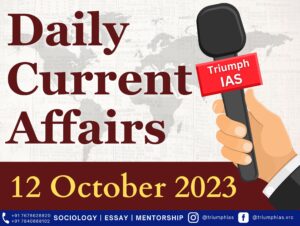 |
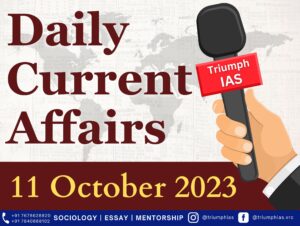 |
GS Related Practices Question…
To master these intricacies and fare well in the Sociology Optional Syllabus, aspiring sociologists might benefit from guidance by the Best Sociology Optional Teacher and participation in the Best Sociology Optional Coaching. These avenues provide comprehensive assistance, ensuring a solid understanding of sociology’s diverse methodologies and techniques.
META TAGS:
Current affairs 13 October 2023, Current affairs 12 October 2023, Today news, Today news GS, Today news upsc, Today news and views, Today news 2023, Today news Current affairs September 2023, Current affairs news, Current affairs book pdf, Current affairs best blog, Current affairs for UPSC, Current affairs 2023, Current affairs contact, Current affairs book, Current affairs program meaning

Choose The Best Sociology Optional Teacher for IAS Preparation?
At the beginning of the journey for Civil Services Examination preparation, many students face a pivotal decision – selecting their optional subject. Questions such as “which optional subject is the best?” and “which optional subject is the most scoring?” frequently come to mind. Choosing the right optional subject, like choosing the best sociology optional teacher, is a subjective yet vital step that requires a thoughtful decision based on facts. A misstep in this crucial decision can indeed prove disastrous.
Ever since the exam pattern was revamped in 2013, the UPSC has eliminated the need for a second optional subject. Now, candidates have to choose only one optional subject for the UPSC Mains, which has two papers of 250 marks each. One of the compelling choices for many has been the sociology optional. However, it’s strongly advised to decide on your optional subject for mains well ahead of time to get sufficient time to complete the syllabus. After all, most students score similarly in General Studies Papers; it’s the score in the optional subject & essay that contributes significantly to the final selection.
“A sound strategy does not rely solely on the popular
Opinion of toppers or famous YouTubers cum teachers.”
It requires understanding one’s ability, interest, and the relevance of the subject, not just for the exam but also for life in general. Hence, when selecting the best sociology teacher, one must consider the usefulness of sociology optional coaching in General Studies, Essay, and Personality Test.
The choice of the optional subject should be based on objective criteria, such as the nature, scope, and size of the syllabus, uniformity and stability in the question pattern, relevance of the syllabic content in daily life in society, and the availability of study material and guidance. For example, choosing the best sociology optional coaching can ensure access to top-quality study materials and experienced teachers. Always remember, the approach of the UPSC optional subject differs from your academic studies of subjects. Therefore, before settling for sociology optional, you need to analyze the syllabus, previous years’ pattern, subject requirements (be it ideal, visionary, numerical, conceptual theoretical), and your comfort level with the subject.
This decision marks a critical point in your UPSC – CSE journey, potentially determining your success in a career in IAS/Civil Services. Therefore, it’s crucial to choose wisely, whether it’s the optional subject or the best sociology optional teacher. Always base your decision on accurate facts, and never let your emotional biases guide your choices. After all, the search for the best sociology optional coaching is about finding the perfect fit for your unique academic needs and aspirations.
To master these intricacies and fare well in the Sociology Optional Syllabus, aspiring sociologists might benefit from guidance by the Best Sociology Optional Teacher and participation in the Best Sociology Optional Coaching. These avenues provide comprehensive assistance, ensuring a solid understanding of sociology’s diverse methodologies and techniques. Sociology, Social theory, Best Sociology Optional Teacher, Best Sociology Optional Coaching, Sociology Optional Syllabus.
Best Sociology Optional Teacher, Sociology Syllabus, Sociology Optional, Sociology Optional Coaching, Best Sociology Optional Coaching, Best Sociology Teacher, Sociology Course, Sociology Teacher, Sociology Foundation, Sociology Foundation Course, Sociology Optional UPSC, Sociology for IAS,
Follow us :
🔎 https://www.instagram.com/triumphias
🔎https://www.youtube.com/c/TriumphIAS
🔎https://t.me/VikashRanjanSociology
Find More Blogs…
| Compare and contrast Karl Marx’s and Max weber’s | Karl Marx- Historical Materialism |
| Talcott Parsons : Social system | Scope of the subject and comparison with other social sciences |

